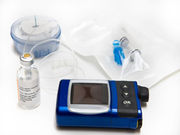Adolescents with type 1 diabetes had improved glycemic control, reduced hypoglycemia exposure
FRIDAY, Sept. 15, 2017 (HealthDay News) — For adolescents with type 1 diabetes (T1D), a closed-loop control (CLC) system is associated with improved glycemic control and reduced exposure to hypoglycemia during prolonged exercise, cold temperatures, and high altitude, according to a study published online Aug. 30 in Diabetes Care.
Marc D. Breton, Ph.D., from the University of Virginia in Charlottesville, and colleagues conducted a randomized trial involving 32 adolescents with T1D who participated in a five-day ski camp at two sites. Participants were randomized to the University of Virginia-CLC system or remotely-monitored sensor-augmented pump.
The researchers found that the percentage time in range was improved using CLC versus the physician-monitored open-loop (71.3 versus 64.7 percent; +6.6 percent; 95 percent confidence interval, 1 to 12; P = 0.005), with maximum effect late at night. Overall, there was improvement in exposure to hypoglycemia and carbohydrate treatments (P = 0.001 and 0.007, respectively), with strong ski level effects during the daytime (P = 0.0001 and 0.006, respectively). Ski/snowboard proficiency was balanced between the groups, with a strong site effect. No adverse effects were seen in association with CLC; feedback from participants was overwhelmingly positive.
“CLC in adolescents with T1D, improved glycemic control and reduced exposure to hypoglycemia during prolonged intensive winter sport activities, despite the added challenges of cold and altitude,” the authors write.
Several authors disclosed financial ties to the pharmaceutical industry.
Copyright © 2017 HealthDay. All rights reserved.








